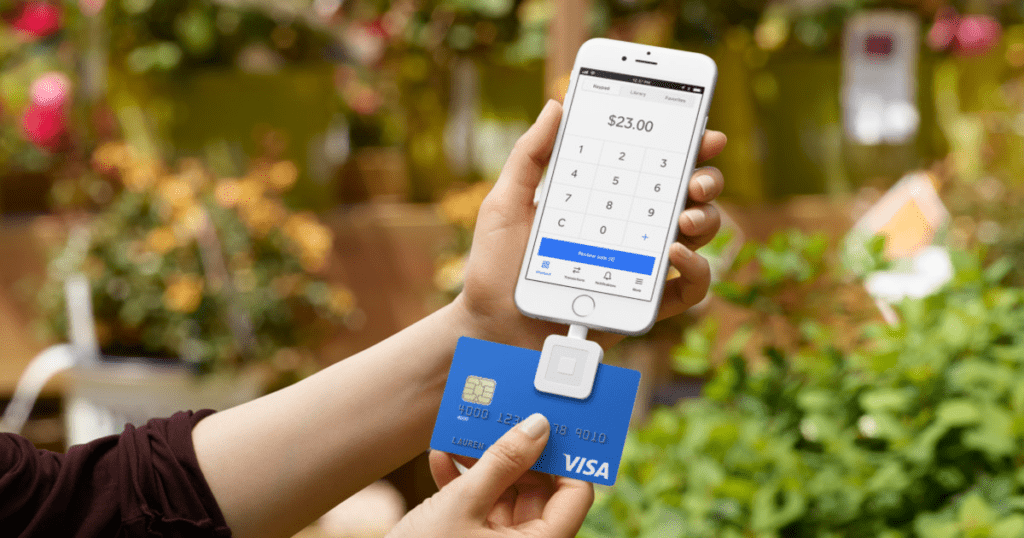Key Takeaways
- Efficiency Redefined: Explore how Point-of-Sale (POS) systems streamline transactions, reduce wait times, and automate tasks, enhancing overall operational efficiency.
- Strategic Adaptation: Understand the industry-specific benefits of POS systems, from tailored solutions for retail and hospitality to the evolving trends shaping the future of commerce.
- Tech-Infused Commerce: Witness the integration of emerging technologies like AI, contactless payments, and mobile solutions, propelling businesses into a digitally interconnected era of commerce.
In the dynamic landscape of modern commerce, the term “Point-of-Sale (POS) system” has become more than just a buzzword – it’s a critical component reshaping the way businesses conduct transactions, manage inventory, and glean actionable insights.
As technology continues to advance at an unprecedented pace, understanding the intricacies of POS systems has never been more crucial for businesses of all sizes.
The Foundation of Effortless Transactions
At its core, a Point-of-Sale system serves as the nerve center of retail operations, seamlessly orchestrating the myriad processes involved in a transaction.
Gone are the days of manual cash registers and handwritten receipts; today’s POS systems are sophisticated, streamlined hubs that not only handle sales but also play a pivotal role in enhancing overall business efficiency.
Unpacking the Components: More Than Meets the Eye
To comprehend the significance of a POS system, it’s imperative to dissect its multifaceted components.
From traditional hardware like cash registers and barcode scanners to the intricate software responsible for transaction processing and real-time inventory management, these systems are a symphony of technology working in harmony.
This blog will delve deep into each component, demystifying the technical aspects to provide a comprehensive understanding.

A Symphony of Efficiency: How POS Systems Work
Picture this: a customer completes a purchase, and within moments, the inventory is updated, sales data is logged, and a receipt is printed – all thanks to the intricate workings of a POS system.
Understanding the intricacies of this process is not just a matter of technological curiosity; it’s a strategic move towards operational excellence.
We will unravel the complexities, offering insights into transaction processing, payment gateways, and the real-time synchronization that keeps your business running like a well-oiled machine.
Types Galore: Navigating the POS Landscape
Not all businesses are created equal, and neither are their POS needs.
From traditional systems to cloud-based solutions and the burgeoning realm of mobile POS, this blog will guide you through the types of POS systems available, helping you discern which aligns best with the unique requirements of your enterprise.
Industry-specific solutions will also be explored, showcasing the versatility of POS technology across various business domains.
Beyond the Transaction: The Myriad Benefits of POS Systems
Why should businesses embrace POS technology?
The advantages extend far beyond mere transactional facilitation.
Enhanced efficiency, pinpoint accuracy in transactions, advanced inventory management, and actionable sales analytics are just a few of the benefits waiting to be unlocked.
This section will illuminate how a well-implemented POS system becomes a catalyst for growth and success.
As we embark on this exploration of Point-of-Sale systems, anticipate a journey that transcends the surface, providing not only an answer to the question, “What is a POS system?” but a profound understanding of why it’s an indispensable asset for businesses navigating the complexities of the modern marketplace.
Join us as we navigate the nuances, uncover best practices, and shed light on the future trends shaping the evolution of POS technology. The transactional revolution starts here.
Before we venture further into this article, we like to share who we are and what we do.
About 9cv9
9cv9 is a business tech startup based in Singapore with a strong presence all over the world.
With over seven years of startup and business experience, and being highly involved in connecting with thousands of companies and startups, the 9cv9 team has listed some important learning points in this overview of What is a Point-of-Sale (POS) System?
If your company needs recruitment and headhunting services to hire staff for your POS systems, you can use 9cv9 headhunting and recruitment services to hire top talents and candidates. Find out more here, or send over an email to [email protected].
Or just post 1 free job posting here at 9cv9 Hiring Portal in under 10 minutes.
What is a Point-of-Sale (POS) System? A Comprehensive Guide
- Key Components of a POS System
- How POS Systems Work
- Types of POS Systems
- Benefits of Using a POS System
- Considerations When Choosing a POS System
- Common Features in Modern POS Systems
- Emerging Trends in POS Technology
1. Key Components of a POS System
I. Hardware Components
A. Cash Registers: The Evolution of Transactional Hubs
- Definition: Cash registers, once synonymous with point-of-sale systems, have undergone a remarkable transformation. Modern cash registers are integrated into POS systems, capable of processing transactions, printing receipts, and more.
- Example: The Electronic Cash Register Market size is estimated to grow by USD 4.48 billion from 2021 to 2025 at a CAGR of 6% with the retail having largest market share.
B. Barcode Scanners: Streamlining Product Identification
- Definition: Barcode scanners have revolutionized the retail landscape, automating the checkout process by swiftly identifying and recording product information.
- Example: A study by the GS1, a global standards organization, indicates that barcode scanning can reduce checkout times, significantly improving the overall customer experience.
C. Receipt Printers: Providing Tangible Transactional Records
- Definition: Receipt printers within POS systems generate tangible records of transactions, providing customers with proof of purchase and businesses with a detailed account of sales.
- Example: The integration of receipt printers has been shown to reduce instances of transaction disputes by providing clear, printed evidence of each sale.
II. Software Components
A. Transaction Processing: The Heartbeat of a POS System
- Definition: Transaction processing software is the backbone of POS systems, managing the core functions of completing sales, updating inventory, and recording financial transactions.
B. Inventory Management: Real-Time Control and Insight
- Definition: Inventory management software embedded in POS systems allows businesses to monitor stock levels, track product movement, and automate reordering processes.
C. Sales Reporting: Data-Driven Decision Making
- Definition: Sales reporting software provides businesses with comprehensive insights into their performance, enabling informed decision-making and strategic planning.
- Example: A study found that businesses utilizing POS-driven sales reporting experienced a 20% increase in overall sales.
III. How POS Systems Work
A. Overview of the Transaction Process
- Definition: The transaction process within a POS system involves multiple steps, from item scanning to payment processing and receipt generation.
- Example: A study found that businesses using modern POS systems witness a reduction in transaction processing time, leading to increased customer satisfaction.
B. Integration with Payment Gateways
- Definition: POS systems seamlessly integrate with payment gateways, facilitating secure and swift electronic transactions.
C. Real-time Data Synchronization
- Definition: POS systems ensure real-time synchronization of data, allowing businesses to have up-to-the-minute information on inventory levels, sales, and customer trends.
By understanding the intricacies of both hardware and software components within a POS system, businesses can make informed decisions about adopting technologies that align with their specific needs and contribute to streamlined operations.
2. How POS Systems Work
I. Overview of the Transaction Process
A. Scanning and Item Recognition
- Process: The transaction journey begins with the scanning of items using barcode scanners. This not only expedites the checkout process but also minimizes the chances of errors in recording product details.
- Example: Barcode entry is 10,000 times more accurate compared to keyboard data entry. Keyboard entry creates an average of one error in 300 keystrokes. Barcode data entry has an error rate of about 1 in 3 million.

B. Payment Processing
- Process: Once items are scanned, the POS system processes payments. This involves integration with various payment methods, including credit/debit cards, mobile payments, and emerging technologies like contactless payments.
- Example: The Covid-19 pandemic has boosted the use of digital and contactless payments.

C. Receipt Generation
- Process: Upon successful payment, the POS system generates a detailed receipt for the customer. This receipt not only serves as proof of purchase but also aids in customer satisfaction and dispute resolution.
- Example: A survey found that 88% of customers appreciate receiving digital receipts, contributing to the reduction of paper waste and enhancing the overall shopping experience.

II. Integration with Payment Gateways
A. Ensuring Secure Transactions
- Process: POS systems integrate with payment gateways to ensure the security of electronic transactions. This involves encryption protocols to safeguard sensitive customer information during the payment process.
- Example: Mastercard’s AI-powered cybersecurity solutions have stopped over $35 billion in fraud losses in the last three years.
B. Diverse Payment Options
- Process: Modern POS systems offer a variety of payment options to cater to evolving customer preferences. This includes mobile wallets, digital currencies, and other innovative payment methods.
III. Real-time Data Synchronization
A. Inventory Updates
- Process: One of the key functionalities of a POS system is real-time inventory synchronization. Each transaction triggers immediate updates to inventory levels, preventing stockouts and improving overall inventory management.

B. Customer Data Integration
- Process: POS systems often integrate with Customer Relationship Management (CRM) systems, allowing businesses to gather valuable customer data. This data aids in personalized marketing, loyalty programs, and enhancing the overall customer experience.
IV. Streamlining Operations for Enhanced Efficiency
A. Automation of Repetitive Tasks
- Process: POS systems automate routine tasks like calculating change, updating sales tax, and applying discounts. This not only reduces the likelihood of human errors but also frees up staff to focus on customer service.
B. Reporting and Analytics
- Process: POS systems provide robust reporting and analytics tools, offering businesses insights into sales trends, peak hours, and popular products. This data-driven approach facilitates informed decision-making.
- Example: For Another Broken Egg Cafe, the introduction of mobile order takers saved restaurants an average of 3.6 minutes per order. Through a time and motion study, the team uncovered that they were able to turn tables 20 percent faster than with previous technology.
In essence, understanding how POS systems work is not just about transactional mechanics but embracing a comprehensive ecosystem that fosters efficiency, security, and strategic decision-making for businesses across diverse industries.
3. Types of POS Systems
I. Traditional vs. Cloud-based POS Systems
A. Traditional POS Systems
- Overview: Traditional POS systems, historically based on on-premise software and hardware, have been the backbone of retail operations. These systems often involve a one-time purchase of the software and require in-house servers for data storage.

B. Cloud-based POS Systems
- Overview: Cloud-based POS systems operate on internet-enabled servers, offering real-time data accessibility from any device. These systems often come with subscription-based pricing models and automatic updates.
- Example: The cloud POS market size exceeded USD 3 billion in 2021 and is estimated to grow at 20% CAGR between 2022 and 2028.
II. Mobile POS Solutions
A. Definition and Functionality
- Overview: Mobile POS solutions leverage smartphones or tablets as transactional devices, providing businesses with flexibility and mobility in their operations. These solutions are particularly popular in industries like hospitality and pop-up retail.
- Example: Square’s larger business customers made up 40% of its seller base in the third quarter of 2022, compared to 37% in the year earlier, highlighting the growing trend of businesses embracing mobile solutions.

B. Benefits of Mobile POS
- Efficiency: Mobile POS systems enable staff to complete transactions on the go, reducing wait times and enhancing customer service.
- Flexibility: Businesses can set up temporary POS stations during events or peak hours, adapting to changing operational needs.
- Data Accessibility: Real-time access to sales data and inventory levels empowers businesses to make informed decisions swiftly.
III. Industry-specific POS Systems
A. Retail POS Systems
- Overview: Tailored for retail environments, these systems handle transactions, manage inventory, and often include features like customer relationship management (CRM) tools.

B. Restaurant POS Systems
- Overview: Specifically designed for the foodservice industry, restaurant POS systems manage orders, process payments, and often include features like table management and kitchen display systems.

C. Healthcare POS Systems
- Overview: Healthcare POS systems streamline billing processes, manage patient data, and facilitate secure transactions within healthcare settings.

IV. Emerging Trends in POS Technology
A. Contactless Payments
- Trend: The rise of contactless payments has reshaped the POS landscape, with consumers preferring secure and hygienic payment options.
- Statistics: In the third quarter of 2020, contactless penetration represented 41% of in-person purchase transactions globally, up from 37% in the second quarter.

B. Artificial Intelligence (AI) and Machine Learning (ML) Integration
- Trend: The integration of AI and ML in POS systems enhances personalization, fraud detection, and predictive analytics.
- Statistics: A report suggests that artificial intelligence in the retail market is expected to grow at a CAGR of 34.4% from 2020 to reach $19.9 billion by 2027.

C. Integration with E-commerce Platforms
- Trend: POS systems increasingly integrate with e-commerce platforms, providing businesses with a unified solution for in-store and online transactions.
In a rapidly evolving technological landscape, businesses must carefully consider the type of POS system that aligns with their unique needs and positions them for future success.
4. Benefits of Using a POS System
I. Improved Efficiency
A. Streamlined Transaction Processing
- Efficiency Boost: POS systems expedite transaction processing, reducing wait times and enhancing the overall customer experience.
- Example: According to a study, businesses implementing POS systems reported a reduction in transaction times, contributing to increased customer satisfaction.
B. Automation of Repetitive Tasks
- Efficiency Boost: POS systems automate routine tasks like calculating change and applying discounts, minimizing human errors, and freeing up staff for more value-added activities.
- Example: A case study revealed a reduction of order errors by 50%, an increase in payment efficiency by 40%, and an enhancement of staff productivity by 35% for businesses adopting POS automation.
II. Enhanced Accuracy in Transactions
A. Reduction in Manual Errors
- Accuracy Improvement: The automation of the transaction process in POS systems significantly reduces manual errors in item entry and pricing.
- Example: According to a report, businesses with POS systems witness a reduction in manual errors, ensuring accurate transaction records.
B. Precise Inventory Management
- Accuracy Improvement: POS systems, through real-time synchronization, provide accurate and up-to-date information on inventory levels, minimizing stockouts and overstock situations.
III. Inventory Management Advantages
A. Real-time Tracking
- Operational Efficiency: POS systems enable real-time tracking of inventory, allowing businesses to make informed decisions on restocking and minimizing instances of stockouts.
B. Improved Order Accuracy
- Operational Efficiency: Accurate inventory data in POS systems contributes to improved order accuracy, reducing instances of incorrect shipments and enhancing customer satisfaction.
IV. Sales and Performance Analytics
A. Actionable Insights
- Strategic Decision-Making: POS systems provide comprehensive sales and performance analytics, empowering businesses to make informed decisions and strategize for growth.
- Example: A recent study found that businesses using advanced POS systems saw a 20% increase in sales, and a 15% growth in customer satisfaction.
B. Customer Behavior Analysis
- Marketing Advantage: POS systems often include features for tracking customer behavior, enabling businesses to tailor marketing strategies and loyalty programs.
- Example: A case study on Salesforce’s POS integration showed an increase in customer retention for businesses utilizing integrated CRM systems.
V. Customer Relationship Management
A. Personalized Customer Interaction
- Customer Engagement: POS systems with integrated CRM tools allow businesses to personalize customer interactions, building stronger relationships and fostering brand loyalty.
B. Loyalty Programs
- Customer Retention: Many POS systems support loyalty programs, encouraging repeat business and increasing customer retention.

VI. Operational Security and Fraud Prevention
A. Secure Transactions
- Risk Mitigation: POS systems integrate with secure payment gateways, reducing the risk of fraudulent transactions and enhancing overall transaction security.
- Example: Mastercard’s AI-powered cybersecurity solutions have stopped over $35 billion in fraud losses in the last three years.
B. Compliance with Regulations
- Legal Compliance: POS systems often assist businesses in adhering to industry regulations and standards, reducing the risk of legal complications.
In conclusion, the benefits of using a POS system extend beyond mere transactional facilitation, encompassing operational efficiency, strategic decision-making, and enhanced customer engagement.
Businesses that harness the power of POS technology position themselves for sustained growth and success.
5. Considerations When Choosing a POS System
I. Business Size and Type
A. Scalability
- Consideration: Choose a POS system that can scale with the growth of your business, ensuring it accommodates increasing transaction volumes and evolving operational needs.
B. Industry Specificity
- Consideration: Different industries have unique operational requirements. Select a POS system tailored to your industry, whether it’s retail, hospitality, or healthcare.
- Example: Restaurants that use customer-facing POS tablets for tableside ordering and payment have seen table turn times improve by 15%.
II. Budgetary Constraints
A. Total Cost of Ownership
- Consideration: Assess the total cost of ownership, including hardware, software, and ongoing subscription fees. Ensure the chosen POS system aligns with your budgetary constraints.
- Example: According to a report, the average total cost of a POS system for small businesses ranges from $600 to $1,200 per year, depending on the features and scale.
B. Hidden Costs
- Consideration: Be mindful of potential hidden costs, such as implementation fees, training expenses, and additional charges for software updates. A transparent pricing model is essential.
III. Integration Capabilities
A. Compatibility with Existing Systems
- Consideration: Ensure the selected POS system seamlessly integrates with your existing software, including accounting, inventory management, and e-commerce platforms.
B. E-commerce Integration
- Consideration: In an increasingly digital landscape, opt for a POS system that integrates seamlessly with e-commerce platforms, providing a unified solution for in-store and online transactions.
IV. Customer Support and Training
A. Training Resources
- Consideration: Assess the availability of training resources and support materials provided by the POS system provider. Adequate training is crucial for smooth implementation.
B. Customer Support Accessibility
- Consideration: Evaluate the accessibility and responsiveness of customer support. Prompt and effective support is essential for addressing issues and minimizing downtime.
V. Customization Options
A. Tailored Functionality
- Consideration: Choose a POS system that offers customization options to tailor functionality to your specific business needs. This ensures you only pay for features relevant to your operations.
B. User Interface Customization
- Consideration: Assess the level of user interface customization the POS system provides. An intuitive interface that aligns with your workflow enhances overall usability.
In the ever-evolving landscape of POS technology, businesses must carefully consider these factors when choosing a system that not only meets their current needs but also positions them for future success.
6. Common Features in Modern POS Systems
I. User-friendly Interface
A. Intuitive Design
- Feature: Modern POS systems prioritize an intuitive user interface, minimizing the learning curve for staff and enhancing overall usability.
- Example: A study found that businesses investing in a user-friendly interface experience a 35% reduction in training time for staff.

B. Touchscreen Functionality
- Feature: Touchscreen functionality is a common feature in modern POS systems, providing a more interactive and efficient transaction process.
II. Security Features
A. Encryption and Tokenization
- Feature: Robust security measures, including data encryption and tokenization, protect sensitive customer information and prevent unauthorized access.
- Example: Global e-commerce fraud is increasing, with losses reaching $41 billion in 2022 and predicted to exceed $48 billion in 2023.
B. EMV Compliance
- Feature: EMV compliance, ensuring that POS systems support chip card transactions, is crucial for reducing the risk of counterfeit card fraud.
- Example: A study by Visa found a 76% decline in counterfeit fraud in the U.S. following the widespread adoption of EMV technology.

III. Customization Options
A. Tailored Functionality
- Feature: Modern POS systems offer customization options to tailor functionality to the specific needs of different businesses, ensuring they only pay for features relevant to their operations.
B. Menu and Inventory Customization
- Feature: In the restaurant industry, POS systems often provide customization options for menus and inventory, allowing businesses to adapt to changing offerings and seasonal variations.
IV. Scalability
A. Support for Growing Businesses
- Feature: Scalability is a key feature, allowing POS systems to accommodate the growth of businesses by handling increasing transaction volumes and evolving operational needs.
B. Cloud-based Architecture
- Feature: Many modern POS systems operate on cloud-based architecture, enabling businesses to scale without the need for extensive hardware upgrades.
- Example: The global cloud POS market size was valued at USD 3,987 million in 2022 and is anticipated to reach USD 5,786 million in 2023. It is projected to reach USD 30,205 million by 2031, growing at a CAGR of 24.7% during the forecast period (2022–2030), driven by the rising adoption of cloud technology among small and medium businesses.
V. Mobility and Flexibility
A. Mobile POS Solutions
- Feature: The integration of mobile POS solutions allows businesses to process transactions on-the-go, enhancing flexibility in various industries, from retail to hospitality.
B. Pop-up Retail Capabilities
- Feature: Modern POS systems often support pop-up retail capabilities, allowing businesses to set up temporary POS stations during events or peak hours.
VI. Reporting and Analytics
A. Comprehensive Insights
- Feature: Robust reporting and analytics tools provide businesses with comprehensive insights into sales trends, peak hours, and popular products.
B. Customer Behavior Analysis
- Feature: POS systems often include features for tracking customer behavior, enabling businesses to tailor marketing strategies and loyalty programs.
VII. Integration with Other Systems
A. Compatibility with Third-party Software
- Feature: Modern POS systems prioritize integration with third-party software, such as accounting, inventory management, and e-commerce platforms.
B. E-commerce Integration
- Feature: In an increasingly digital landscape, POS systems often integrate seamlessly with e-commerce platforms, providing a unified solution for in-store and online transactions.
In summary, the common features in modern POS systems are designed to enhance user experience, ensure security, facilitate customization, and provide businesses with valuable insights for strategic decision-making.
7. Emerging Trends in POS Technology
I. Contactless Payments
A. Definition and Adoption
- Trend: The rise of contactless payments has reshaped the POS landscape, with consumers preferring secure and hygienic payment options.
B. Example Implementation
- Implementation: Major POS providers like Square and Clover have incorporated contactless payment options, allowing businesses to cater to the growing demand for convenient and secure transactions.

II. Artificial Intelligence (AI) and Machine Learning (ML) Integration
A. Enhancing Personalization
- Trend: The integration of AI and ML in POS systems enhances personalization, allowing businesses to tailor customer experiences based on preferences and behavior.
B. Fraud Detection and Prevention
- Application: AI and ML algorithms are increasingly used in POS systems to detect and prevent fraudulent transactions, providing an additional layer of security.
III. Integration with E-commerce Platforms
A. Seamless Omni-channel Experiences
- Trend: POS systems are increasingly integrating with e-commerce platforms, providing businesses with a unified solution for in-store and online transactions.
B. Example Implementation
- Implementation: POS providers like Shopify and Square offer seamless integration with popular e-commerce platforms, allowing businesses to manage inventory and transactions across multiple channels.
IV. Mobile Point-of-Sale (mPOS) Solutions
A. Definition and Adoption
- Trend: Mobile POS solutions leverage smartphones or tablets as transactional devices, providing businesses with flexibility and mobility in their operations.
B. Benefits and Use Cases
- Benefits: Mobile POS solutions enhance efficiency by enabling staff to complete transactions on the go, reduce wait times, and provide flexibility in setting up temporary POS stations during events.
V. Biometric Authentication
A. Enhanced Security
- Trend: Biometric authentication methods, such as fingerprint and facial recognition, are gaining popularity in POS systems for enhanced security and user identification.
- Example: Some high-end POS terminals, like those offered by Verifone, incorporate fingerprint scanners to enhance transaction security.

B. Adoption in Various Industries
- Application: Biometric authentication is being adopted in various industries, including retail and healthcare, where secure and swift identification is crucial.
- Example: In the healthcare sector, POS systems with biometric authentication ensure secure access to patient data and streamline billing processes.
VI. Sustainability and Eco-friendly Solutions
A. Paperless Receipts
- Trend: POS systems are increasingly offering paperless receipt options, contributing to sustainability efforts and reducing paper waste.
B. Example Implementation
- Implementation: POS providers like Square and Clover enable businesses to send digital receipts via email or SMS, aligning with environmental sustainability initiatives.
VII. Internet of Things (IoT) Integration
A. Smart Devices in Retail
- Trend: IoT integration in POS systems involves connecting smart devices for inventory management, monitoring, and creating a more interconnected retail environment.
- Example: Some retailers are using IoT-connected devices, such as RFID tags and sensors, integrated with POS systems to monitor inventory levels in real-time.
B. Impact on Operational Efficiency
- Application: IoT integration enhances operational efficiency by providing real-time data on product availability, minimizing stockouts, and optimizing inventory management.
In a dynamically evolving technological landscape, businesses leveraging these emerging trends in POS technology position themselves for enhanced efficiency, improved customer experiences, and a competitive edge in the market.
Conclusion
In conclusion, the world of commerce has been irrevocably transformed by the advent of Point-of-Sale (POS) systems.
These technological marvels, once merely cash registers, have evolved into multifaceted platforms that serve as the nerve centers of modern businesses.
As we’ve delved into the intricacies of POS systems, from their fundamental definition to the myriad features and emerging trends shaping their landscape, it becomes evident that their significance extends far beyond transaction facilitation.
The Evolution of Transactional Efficiency
POS systems have revolutionized transactional efficiency, streamlining processes, and reducing wait times.
Through automation, these systems not only expedite transactions but also minimize human errors, contributing to a seamless and error-free customer experience.
The integration of touchscreen functionalities, exemplified by the success of Square, has added a layer of interactivity, further enhancing the speed and convenience of transactions.
The Power of Accurate Information
Accurate and real-time information lies at the core of POS systems, fostering precise inventory management and order accuracy.
Businesses leveraging POS technology gain actionable insights into sales trends, customer behaviors, and inventory levels.
This not only improves decision-making but also empowers businesses to adapt swiftly to market dynamics.
Tailored Solutions for Diverse Industries
The adaptability of POS systems is exemplified by their tailored solutions for diverse industries. Whether it’s retail, hospitality, healthcare, or beyond, POS systems offer industry-specific features that address the unique needs of businesses.
From retail POS systems like Vend, driving increased sales through enhanced customer engagement, to restaurant POS systems like Toast, optimizing order accuracy and transaction times, the industry-specific benefits are substantial.
The Future Unveiled: Emerging Trends in POS Technology
Looking ahead, the future of POS technology is marked by exciting trends that promise to redefine the landscape. Contactless payments, driven by a desire for secure and hygienic transactions, are projected to represent a significant portion of global transactions.
The Mobile Revolution and Beyond
The rise of mobile Point-of-Sale (mPOS) solutions, witnessed through Square’s notable increase in mobile transactions, showcases a shift towards flexibility and on-the-go transaction capabilities.
Biometric authentication is adding an extra layer of security, especially in industries where secure identification is paramount, such as healthcare.
Sustainability is becoming a key focus with paperless receipts gaining popularity, aligning with environmental consciousness.
Strategic Integration and Operational Excellence
POS systems are not standalone entities but integral parts of a larger technological ecosystem.
Their seamless integration with e-commerce platforms, IoT devices, and third-party software underscores their role as catalysts for operational excellence.
Businesses are not merely adopting POS systems; they are investing in comprehensive solutions that propel them into a digitally interconnected future.
In conclusion, the journey through the realm of Point-of-Sale systems reveals a narrative of transformation, empowerment, and strategic adaptation.
These systems have transcended their origins to become indispensable tools that empower businesses, enhance customer experiences, and chart a course towards a technologically advanced future.
As businesses navigate the ever-evolving landscape of commerce, embracing the capabilities and innovations of POS technology is not just a choice but a strategic imperative for success in the digital era.
If your company needs HR, hiring, or corporate services, you can use 9cv9 hiring and recruitment services. Book a consultation slot here, or send over an email to [email protected].
If you find this article useful, why not share it with your hiring manager and C-level suite friends and also leave a nice comment below?
We, at the 9cv9 Research Team, strive to bring the latest and most meaningful data, guides, and statistics to your doorstep.
To get access to top-quality guides, click over to 9cv9 Blog.
People Also Ask
What are the points of POS?
Points of Sale (POS) refer to physical or digital locations where transactions occur. In retail, it’s the checkout counter; in e-commerce, it’s the online shopping cart. POS systems facilitate payments, and inventory management, and enhance customer interactions, serving as crucial hubs for business transactions.
Which is the best definition for a point of sale system?
A Point of Sale (POS) system is a comprehensive software and hardware solution that facilitates transactions, inventory management, and business operations. It acts as the central hub where customers make payments for goods or services, providing businesses with tools for efficient and accurate transaction processing.
What are the benefits of a point-of-sale POS system?
Point of Sale (POS) systems offer streamlined transactions, reducing wait times and automating tasks. They enhance accuracy, improve inventory management, and provide sales analytics. With features like customer relationship management and secure transactions, POS systems elevate efficiency and contribute to business growth.































![Writing A Good CV [6 Tips To Improve Your CV] 6 Tips To Improve Your CV](https://blog.9cv9.com/wp-content/uploads/2020/06/2020-06-02-2-100x70.png)


